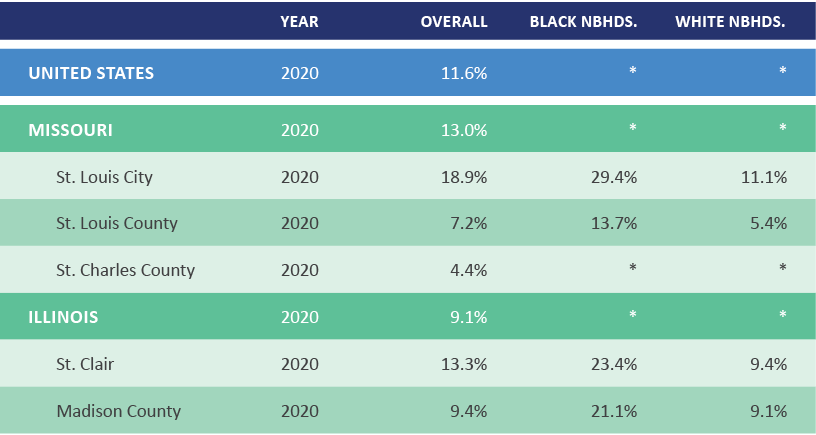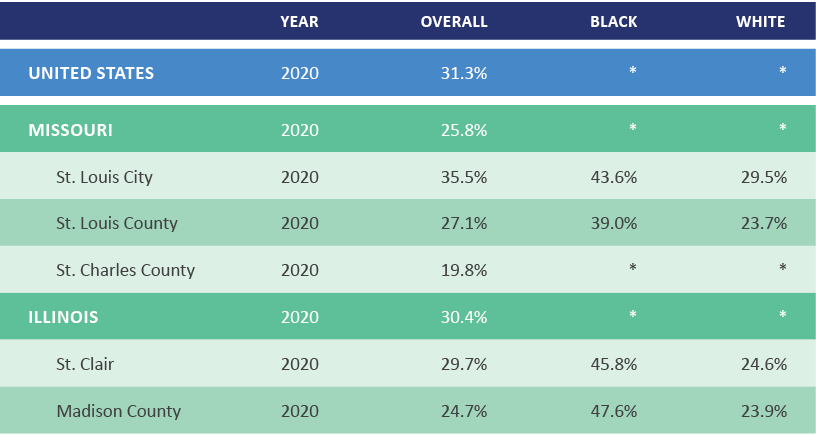Equity Data
Safe Neighborhoods & Strong Communities
Percent of Housing Units that are Vacant
Vacant properties not only have a negative impact on surrounding communities, but also are a significant financial burden on municipalities. Vacant properties strain the resources of local police, fire, building, and health departments, depreciate property values in surrounding neighborhoods, reduce property tax revenue, attract crime, and degrade the overall quality of life for remaining residents. There are many variables that contribute to a property becoming vacant. However, there are also numerous policies, patterns of disinvestment, and inequitable distribution of municipal resources that contribute to high concentrations of vacant houses in certain neighborhoods.


United States Census Bureau. American Community Survey. ACS Selected Housing Characteristics. ACS 5-Year Estimates Data Profiles: 2020. Table: DP04. Accessed at https://data.census.gov/.
Percent of Households that are Cost-Burdened
Cost-burdened households are defined as households spending 30 percent or more of their monthly pretax income on owner housing costs (including mortgages) or on rent payments. Cost-burdened households often have higher eviction rates, increased financial fragility, and wider use of social safety net programs compared with other renters and homeowners. Additionally, as housing costs consume a growing share of household income, families are often forced to cut back in other areas such as food, medical care, and other basic needs which can greatly impact the well-being of the children living in these families.

United States Census Bureau. American Community Survey. ACS Selected Housing Characteristics. ACS 5-Year Estimates Data Profiles: 2020. Table: DP04. Accessed at https://data.census.gov/.
View More Equity Data
Children’s Data
Vision for Children at Risk informs the community with data and information on child well-being in the St. Louis area, builds and drives collaboration and strategic action for children, and advocates for policies and investment in children that support child well-being.




















